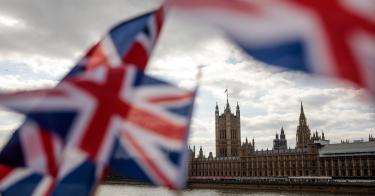While the world waits to see if the U.S. and China can call a truce in their tariff war, President Donald Trump is quietly making potentially major trade moves with the UK and Japan. Halfway through his term, Mr Trump may finally begin to make good on his oft-repeated goal of concluding bilateral fair trade pacts.
Mr Trump campaigned on overturning the postwar global trade architecture, which he argued has devastated the American working class. Now the administration is moving ahead with Britain and Japan, potentially transforming the free-trade environment.
Although uncertainty about Brexit persists, London remains eager to prioritise a U.S.-UK free trade agreement when it eventually leaves the EU. In October last year, Robert Lighthizer, the U.S. trade representative, notified Congress of the administration’s intention to open trade negotiations with Britain. And this year, the UK and the U.S. agreed to continue the “mutual recognition agreement” that ensures their goods meet appropriate regulatory standards in each market. This covers about £12.8bn of trade in sectors ranging from pharmaceuticals to telecoms equipment.
Coupled with similar agreements the UK has signed with Australia and New Zealand, the U.S. deal shows Britain is entirely capable of negotiating its own trade pacts. The Brexit negotiations are the outlier, as the UK has followed the U.S. in running into seemingly insurmountable resistance from the EU.
As the now-abandoned Transatlantic Trade and Investment Partnership negotiations between the U.S. and the EU showed, the EU prefers regulatory harmonisation to mutual recognition. It seeks to entrench Europe’s expensive standards internationally. This is great for the big industries of today, but terrible for new companies that have to meet standards designed by their larger competitors.
The continuation of the U.S.-UK agreement shows the way to an even wider, more ambitious Anglo-American free-trade area that would set a new gold standard for trade deals — one with zero tariffs and based on mutual recognition.
Similarly, it is a particularly good moment to try to expand access to Japan’s large consumer market, given Japanese prime minister Shinzo Abe’s bold moves to open up his economy to global competition. An EU-Japan FTA has recently come into force, giving European goods an advantage over American ones, and Tokyo has spearheaded the Trans-Pacific Partnership in America’s absence. A U.S.-Japan agreement could bring America benefits from Tokyo’s ties to the remaining TPP countries.
In December, Mr Lighthizer released a detailed summary of negotiating objectives, and the two sides have just completed initial talks. The U.S. current account deficit with Japan stood at just under $70bn in both 2016 and 2017, on $284bn of trade in goods and services. Tokyo levies tariffs of 38.5 per cent on U.S. frozen meat exports and 40 per cent on processed cheese, for example.
The key sticking points are Japanese agricultural barriers and the threat of U.S. tariffs on foreign automobiles. Non-tariff barriers, such as onerous regulatory requirements, are also in the American administration’s crosshairs. An exchange of no auto tariffs for some agricultural access, particularly on beef, could be a palatable first step.
An even bolder move than that currently proposed would be a trilateral agreement between the U.S., the UK and Japan, linking the world’s first, third and fifth-largest economies. America would have free-trade anchors in Europe and Asia, and the other two would have similar footholds abroad. For post-Brexit Britain, it would counter the suggestion that the country is about to isolate itself in the global economy. Japan similarly would benefit from showing that China was not Asia’s only attractive trade partner.
There is still a great deal of work to be done, but the Trump administration has taken important first steps. Focusing on high-quality bilateral trade agreements with two of its most important global allies can also lay to rest concerns about Mr Trump’s alleged withdrawal from the world.
It will also undercut Chinese claims to be the new defender of the global trading system, and offer Eurasian countries the hope that there may soon be alternatives to Beijing’s Belt and Road infrastructure initiative. Successfully negotiating a new way forward for U.S. trade might herald an era of free trade activism among the world’s largest democracies.
This piece originally appeared in the Financial Times




